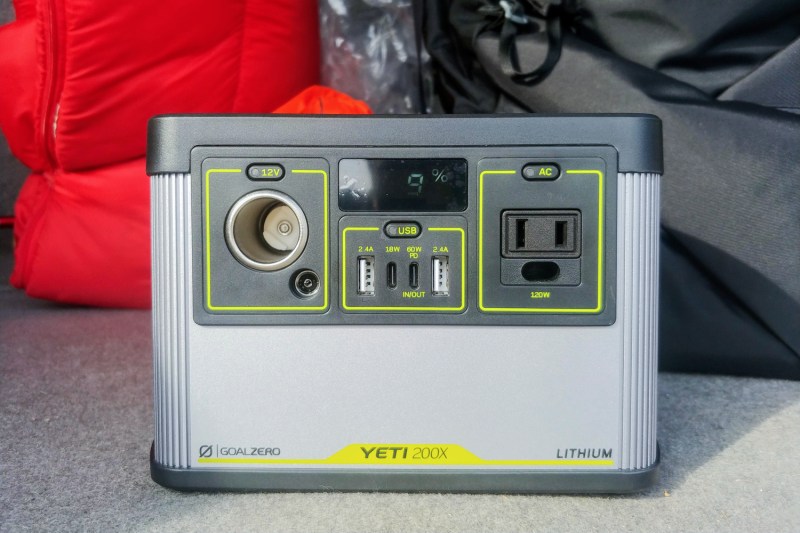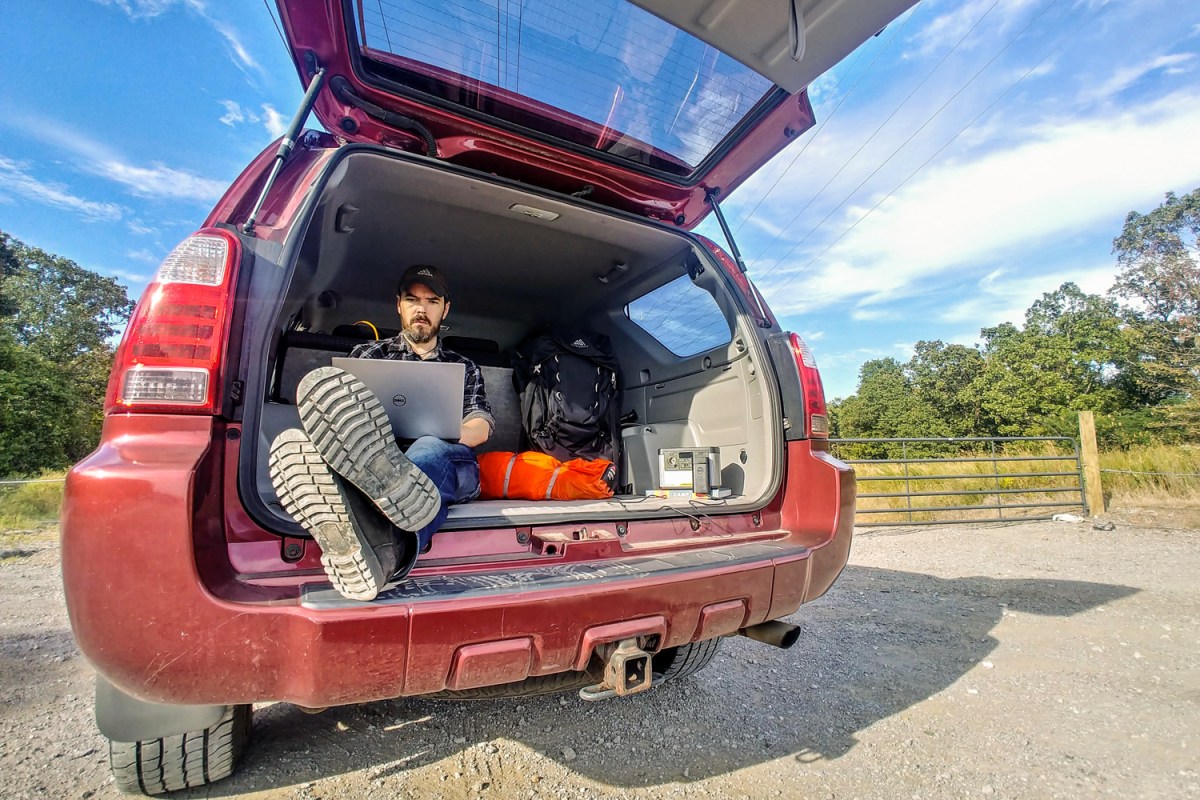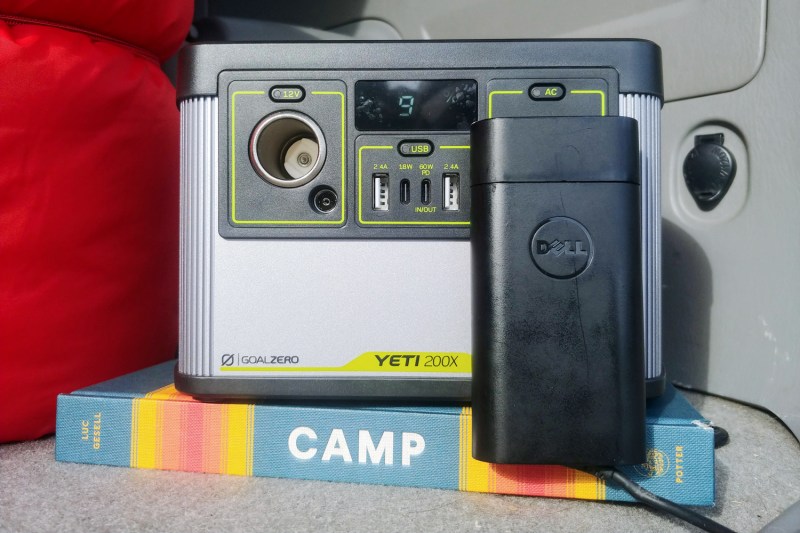
For many, road-tripping and living the vanlife are about getting far, far away from it all. It’s pure escapism, where smartphones and social media have no place. More and more of us, however, are looking to escape while enjoying at least some of the conveniences of home. Most of those conveniences have one thing in common: The need for electricity. The latest release from Goal Zero promises to keep your gadgets and gear charged no matter where life takes you.
As the name implies, Goal Zero’s Yeti 200X delivers almost 200W of power through a heavy-duty rechargeable lithium-ion battery. For the electrically illiterate (including this author), that’s enough juice to charge a tablet more than eight times and most 15-inch laptops around four times. The best part is that it’s smaller than a two-slice toaster and weighs just five pounds. While it’s too bulky to take into the backcountry, it’s plenty portable for a long weekend of off-grid car camping.

We unboxed our review unit and charged it to full capacity in about five hours via a standard household outlet. With the optional portable solar panel — Goal Zero recommends its Nomad 28 Plus — the Yeti 200X reaches max charge in about 10 hours under full sun. That welcome alternative for recharging the unit could allow users to stay off-grid almost indefinitely.
The Yeti 200X is designed to be foolproof with no real setup required. Just charge it up, power it on, and plug in your gear as needed. The array of built-in ports includes two USB-C, two USB-A, a DC 12V, and, perhaps most importantly, a 120W AC. Out of the box, it’s ready to charge almost any modern mobile device, including smartphones, tablets, mirrorless digital cameras, and laptops. Plus, the standard 120W outlet will run low-power household electronics like light bulbs, LCD TVs, and probably even a turntable if off-grid DJing is your thing. In our test, we ran a 23-inch flat-screen TV for more than seven hours.

After testing our review unit for the last week, we found the Yeti 200X works exactly as advertised. It delivers on all its power-related promises, and we found little to quibble about. In the future, integrating a wireless Qi charging pad into the top of the unit would be a nice touch to round out its charging capabilities. Our biggest gripe is the lack of a weather-resistant housing. To be sure, it’s durable enough to survive routine use for car camping purposes provided it’s sheltered from the elements. But, for a product designed for adventure — particularly at a time when many new smartphones and digital cameras are waterproof — it’d be nice to see some level of water resistance.
With a retail price of $300, the Yeti 200X slots neatly into Goal Zero’s lineup of portable power banks, just above the entry-level Yeti 150. The entire series is ideal for vanlifers and road-trippers looking for on-the-go power without the noise, fumes, and maintenance of traditional gas-powered generators. For travelers and backcountry adventurers looking for ultimate portability, the company also offers the Sherpa 100AC Power Bank.



